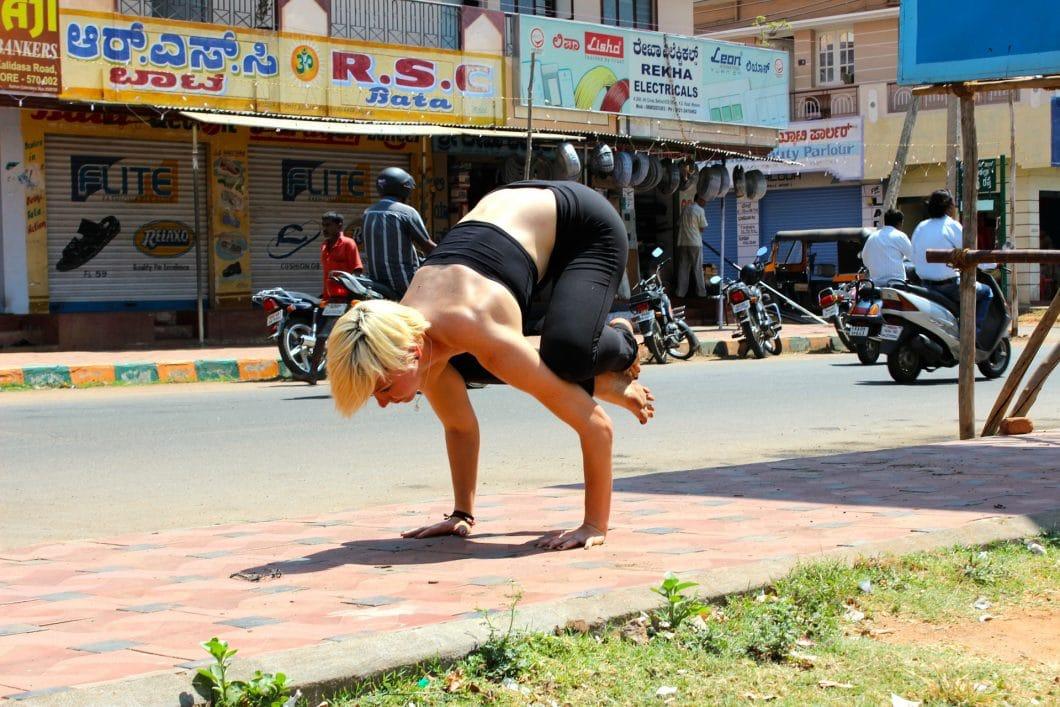The Different Types of Yoga in India
Nowadays, the teaching of yoga is getting richer and richer. Most gyms offer classes, even if it means becoming a real open-air yoga center. And that's a good thing! Originally from India, the practice of yoga has gradually established itself in the sports landscape as a must.
While it is celebrated worldwide on June 21st, we are sometimes tempted to improve our postures or breathing techniques thanks to ancestral techniques and traditional Indian inspirations. Whether or not you decide to attend a yoga class in India or not, India remains and will remain a major influence in the smooth running of a yoga class.
But precisely, with all the types of yoga that are created each year, which ones are really coming from India? Is there a typically Indian yoga? What are the yogic disciplines favored by the locals? A short overview of the different types of yoga practiced in India!
What is an Ashram?
An ashram in ancient India was a secluded place where a sage (Brahmin) sought communion with God. He was far from the distractions of the world and was alone in seeking inner peace. Ashrams have existed in India for over 4,000 years before Christ.
Today, any place used for retreats for the purpose of practicing yoga in India is called an ashram.
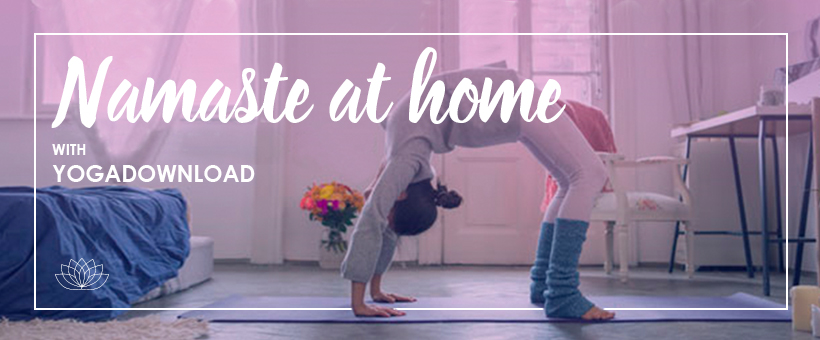
Hatha yoga, the typical yoga of India
While some yogas focus on a specific technique such as breathing, the spine, or pranayama, hatha yoga is one of the yogic pillars that gave birth to this very type of practice.
Hatha yoga literally means "strength" in Sanskrit. It was inspired by an Indian philosopher and teacher, who died in 1989: Krishnamacharya. This same teacher thus trained great names in yoga, who gradually codified and democratized hatha.
Hatha yoga is a mixture of postures (asanas), which in turn call upon breathing (pranayama), but also upon physical strength. It is a complete type of yoga, a session of which often lasts an hour and a half. All this cumulated has made hatha yoga one of the first codified yogas, but above all, one of the most practiced!
Between meditation, relaxation, concentration and yoga postures, hatha yoga is accessible to all, with a very good margin of progression. The dream of any self-respecting yogi, isn't it?
True hatha yoga
In the West, the yoga practiced is a form quite different from that practiced in India. Hatha yoga is not limited to a sequence of gentle postures. It is a true practice towards spirituality.
Hatha means vigor, violence. It is a form of yoga not necessarily suitable for beginners but for individuals who love danger and wish to burn a few steps to reach the path of spirituality more quickly.
Traditionally, it consists of a harmonization of mental (concentration, serenity) and physical (power, flexibility) faculties.
Kundalini yoga, straight from India
Kundalini yoga is one of the original yogas, imported directly from India. Indeed, inspired by Swami Vivekananda and created by the Indian master Bhajan in the 1970s, Kundalini has its source in everything that is most effective in yoga.
For yes, the goal is to take hold of the postures that we already know, to make the practice more advanced. This type of Indian yoga is therefore aimed at more experienced practitioners, who already know what harmony between body and mind means.
While some say that it is based on our sexual energy, Kundalini Yoga is mainly centered around the spine, the true nerve center of energies. From the sacrum to the skull, the challenge is then to master this flow of energies, and to accept letting go.
Full consciousness, breathing, choreography, it is by associating all aspects of yoga that kundalini allows all this, also based on Indian mantras. While the term "kundalini" means "circular" in Sanskrit, it turns out that it is already found in the sacred texts of Hinduism. A real Indian yoga!
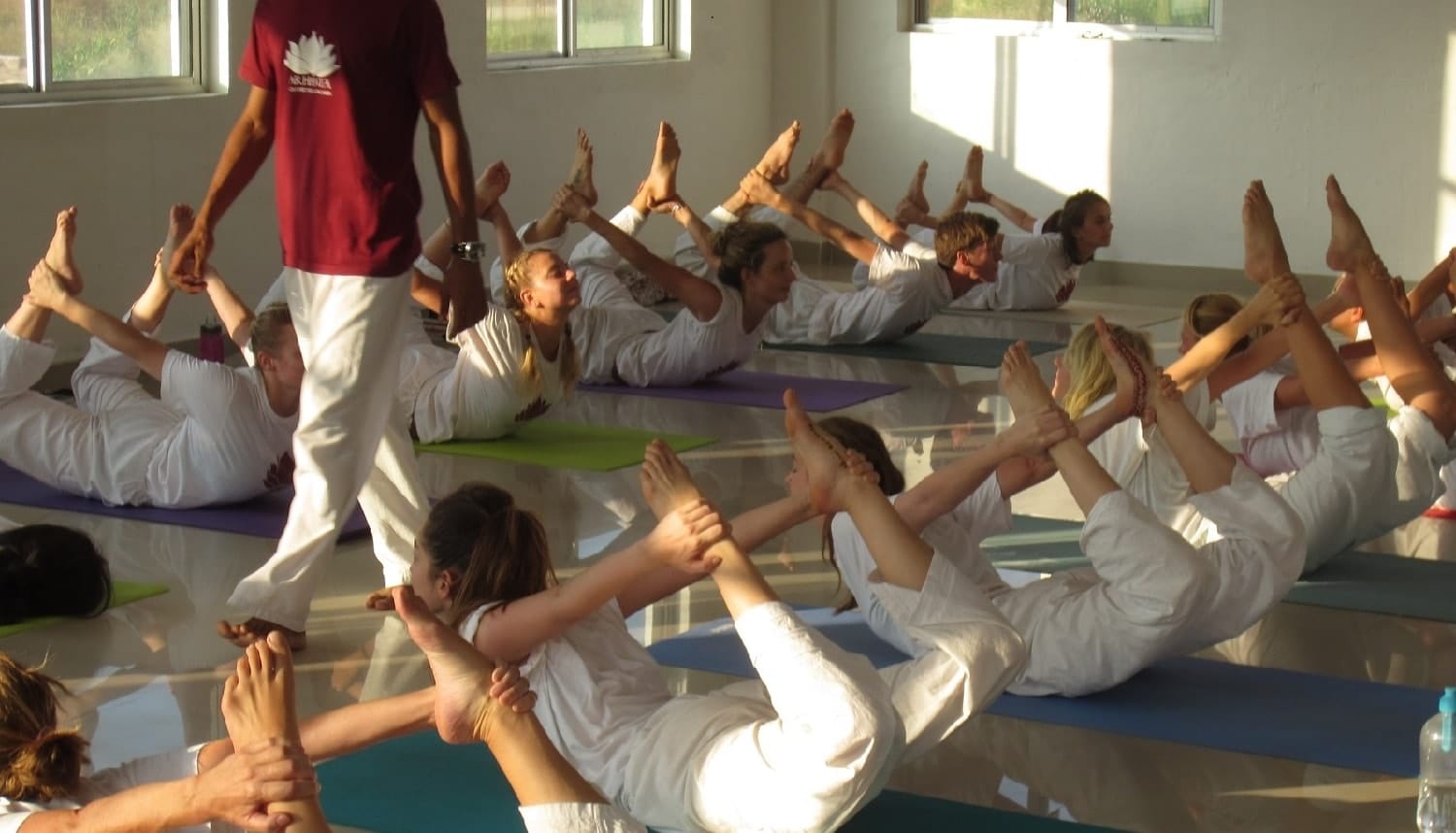
Sivananda yoga, created by and for Indians
Created in the 1960s by Swami Vishnudevahanda, himself a student of the doctor Swami Sivananda (from where the name of the discipline comes from), this type of yoga focuses mainly on breathing, relaxation and positive thinking.
More and more popular, Sivananda is based on 5 main pillars:
• The regular practice in softness,
• Breathing,
• Relaxation,
• Healthy and vegetarian diet,
• Positive thinking, especially through meditation.
During sessions of about 90 minutes, we will then be able to "unite" body and mind (the proclaimed Sanskrit translation of the term "Sivananda").
Stemming mainly from Hatha Yoga, this yoga practice combines asanas, breathing and meditative practice. A dose of well-being to be practiced on a regular basis in order to perceive the beneficial effects on body and mind. And yes, you don't get anything for nothing, even in yoga!
It is a rather strict practice of yoga that often begins with Savasana, the corpse posture. There is little room for improvisation and the practice requires a lot of seriousness, leaving little room for letting go as in other forms of yoga.
The bikram yoga, a famous Indian yoga
Chances are you know at least one name for Bikram Yoga. A few years ago, it was one of the most widely used practices in the discipline.
Concretely, it consists of a series of postures that are often intensive and relatively quick, so far so good. Except that the small particularity is that the room in which it is practiced is heated to 40 degrees! Beyond spirituality, Bikram Yoga stimulates the body through heat to eliminate bad toxins.
The idea is to be in good physical condition so that you don't turn a blind eye for the first five minutes. Elaborated from Hatha Yoga by Bikram Choupdhury (if you were wondering where the name comes from), each movement is obviously thoughtful and correlates with a particular way of breathing.
Famous today for the wrong reasons...
The founder of Bikram Yoga, Bikram Choupdhury, has been accused of sexual assault and rape by several women. According to the lawyer of the latter, he had created a degrading climate for women, openly insulting them and asking them to perform degrading tasks.
Netflix also offers a documentary on the meteoric rise of this "guru" and his fall. At a time when questions such as "can we separate the man from the artist" are still being asked tirelessly, it is important to be informed and to have all the cards in hand before choosing the form of yoga you wish to practice.

Yoga nidra, India at the heart of the practice
Also called "sleep yoga", nidra yoga is a type of yoga developed by Swami Sahyananda and dates back to the 1940s. It is nicknamed so because the practice improves the quality of sleep, for softer nights and maximum relaxation!
Relatively close to sophrology, one can associate the practice of nidra yoga with the sophroliminal state (when one is ready to sleep, and the limit is fine). Practiced lying down in a seated position, at the rate of 1h30 sessions, it is quite simply a question of using the techniques of meditation, breathing, relaxation, to reach a state where the consciousness is awakened, but where the spirit is appeased.
What's at stake? That our consciousness takes control of our body and influences our movements in a relaxed manner. Combining yoga and meditation and getting to know your body better is possible, and it's beneficial!
A class is usually conducted in the following manner: a guided relaxation phase, recitation of mantras and/or sankalpas (soothing scene visualization), and yoga postures. Where silence has its place, the mind can insert itself into it and make yoga nesting a blend of meditation and mindfulness!
Yoga in India: iyengar, the body is an actor
The iyengar takes its name from its creator: B.K.S Iyengar (who founded a school), who imagined it in India from a base: the alignment of the body. Thanks to supports and yoga tools (bricks, straps, ropes, etc.), it allows you to become aware of your body, always guided by a yoga teacher and his integral teaching.
If you decide to practice iyengar yoga, you will probably be strapped to the wall with straps! To better perform the postures and realign your spine and the rest of your body.
Well, don't worry, it can also be practiced on the floor with the bricks or on a chair. The accessories make the postures easier to set up, so everyone can get into iyengar yoga. At a more advanced level, props are used to increase the intensity of the postures to gain more flexibility and power.
The three principles of iyengar yoga are:
• Alignment: of the body itself and of the body in relation to the walls and accessories,
• Extensions: to awaken parts of the body that are under little strain and to allow greater mobility, especially in the joints,
• Stretching: in accordance with the breathing, they are carried out very gently to gain flexibility in the tendons, ligaments and muscles.
Through a sequence of exercises, iyengar yoga allows for better leg positioning, better alignment of the pelvis and intimately connects with yin yoga and kundalini. This new pedagogy will allow a teaching of yoga, innovative at the time, placed in sessions of about 1h30.
Ashtanga yoga, when India is dynamic
Who says yoga has to be slow? Ashtanga Yoga is a dynamic yoga created by Pattabhi Jois in Mysore, South India, based on six series of postures, punctuated by the breath. This yoga was created to train young men before going to war.
The development and the sequence of exercises is done very quickly, with the help of Uijai. Uijai, what is it? It is a sound breathing, which is done by contracting the back of the throat. These postures then make work flexibility and alignment and are evolutionary. Because yes, ashtanga yoga has four levels!
From Sanskrit, "ashtanga" means "eight limbs", and corresponds to the eight branches of yoga described in the yoga sutra. A sporty yoga, often suitable for young and dynamic people, always in the tradition of Indian thought.
The particularity of ashtanga yoga is that the postures follow one another according to predefined series. The student does not move to a new posture before having acquired the previous one. This is an excellent way to improve patience!
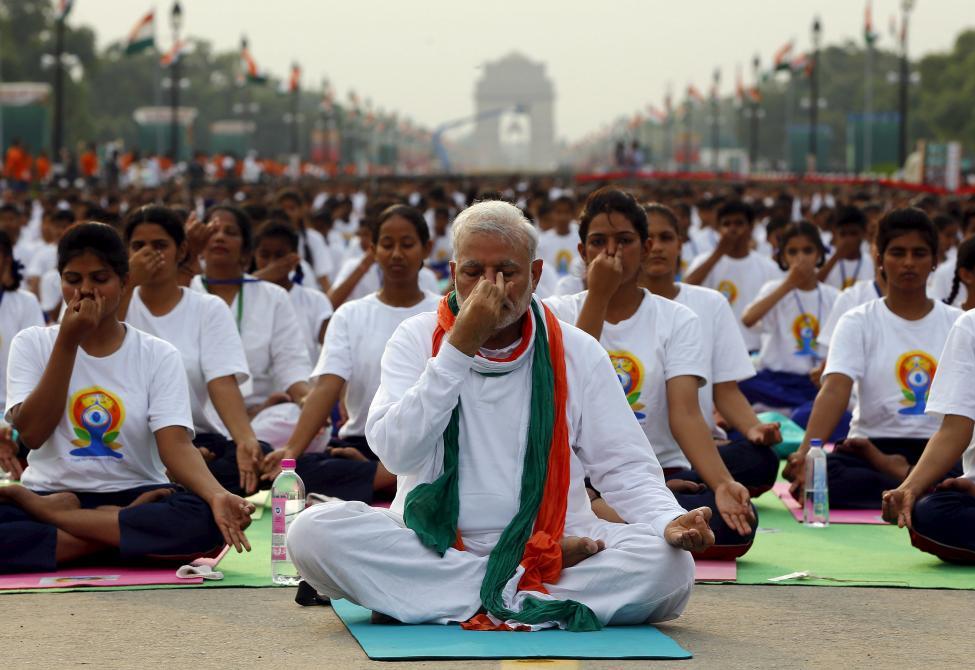
What is the yoga sutra?
The yoga sutra are books that have been used to codify the practice of yoga. If yoga has been on the rise since the 1990s in the United States and France, it has existed for several thousand years in India. The aphorisms (sutra) were written around the 2nd century BC by Patanjali.
Moreover, in the West, only the asana part is generally taught. However, yoga is a true philosophy of life, almost a religion.
There are 4 chapters covering the basics of yoga:
Chapter 1: Unification. This is the book that defines the objective of yoga: the cessation of the agitation of the mind in order to avoid suffering. There are also examples of obstacles and ways to overcome them in this first chapter,
Chapter 2: the journey. The bases to get out of suffering are exposed through 5 anga: yama, niyama, asana, pranayama, pratyahara,
Chapter 3: Powers. The last three anga are presented: dharana, dhyana, samadhi,
Chapter 4: Emancipation. Through the repetition of the themes previously mentioned, Patanjali develops the way to achieve the ultimate detachment leading to freedom.
Vinyasa Yoga, the Power of India
Also called "power yoga", vinyasa yoga owes its name to the association between "nyasa" (place) and "vi" (in a way). To place one's limbs in a certain way, to synchronize one's postures, these are the main pillars of this type of yoga, related to breathing.
The idea is then to link the yoga exercises and thus harmonize body and mind, without any precise order. All practitioners must know how to listen to their needs and desires, a bit like Ashtanga Yoga.
With an often sustained rhythm, what vinyasa teaches to the practitioners is the deepening of a total yoga, but also the rebalancing of emotions and energies. India is good!
Types of yoga not known in the West
As you have understood it, Western yoga and Indian yoga don't have much to do with each other. The practice of yoga is a true philosophy, even a religion. Very much linked to Buddhism, yoga does not have the same scope in India.
Yoga means "union", "yoke", "method" or "resting". It belongs to one of the six orthodox schools of Indian astika philosophy. The primary objective of yoga is to unite body, mind and spirit through meditation, asceticism (discipline to strive for perfection) and physical postures.
As with a religion, there are sacred texts, the yoga sutra, and different branches belonging to four main paths with different goals:
• Jnana-yoga: attaining transcendental knowledge,
• Bhakti-yoga: being completely devoted,
• Karma-yoga: to be at the service of others in selfless actions,
• And raja-yoga: a mixture of the three previous forms associated with hatha yoga.
From this comes different forms of yoga, unknown or little used in the West.

Yoga mantras
If you have been to a yoga class before, your teachers may have set a mantra at the beginning of the class. But this is not necessarily automatic.
The mantra serves as a support for mediation. It can be a sacred invocation formula in its condensed form or a syllable repeated at a certain rhythm like the Om. The mantra yoga is thus a form of ritual made of prayers and visualizations. No particular postures are used here.
The reciter can be accompanied by a mala, a kind of rosary. Mantra yoga is similar to siddha yoga or japa yoga in its popular form.
Tantra Yoga
Tantra yoga in India means rule, method, treatise. It is taken up through kundalini yoga, the balancing of the chakras and energy channels through the body.
In India, it also exists in the form of Kashmir Shivaism. It is a form of yoga primarily based on the energy flowing through the body. There are also ritualized sexual practices linked to Tantrism and allowing to reach the omnipotence.
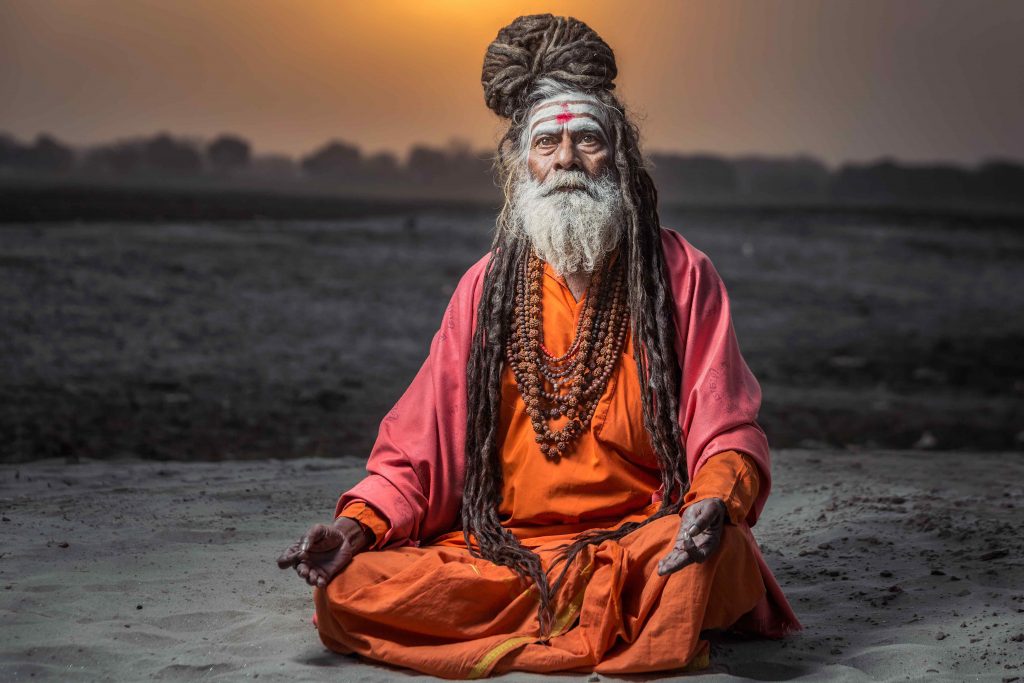
Practicing Yoga in India
To immerse yourself in the culture of Indian-style yoga, there is nothing better than going on a pilgrimage to a yoga center, usually called an ashram.
In Bangalore, you will find the international Art of Living center. With a view of the mountain, the lake and the lush gardens, it will be easy to immerse yourself in the practice of yoga and find your inner peace. Yoga sessions are free of charge, but the apprentice yogis are expected to participate in all ashram chores.
In Kerala, you can visit the Kalari Kovilakom Ashram. A perfect place to practice yoga but also to detox by discovering ayurveda, its massages and its cuisine. The yoga mostly practiced here is yoga nidra to improve the quality of sleep.
In Goa, go to the Ashiyana Yoga Retreat Village. The practice focuses on meditation and mantra yoga with a view of lush nature.
In the Rishikesh region, not far from the Himalayas, you will discover the Parmarth Niketan Ashram. It is suitable for beginners as well as for more advanced yogis through personalized programs for everyone.


